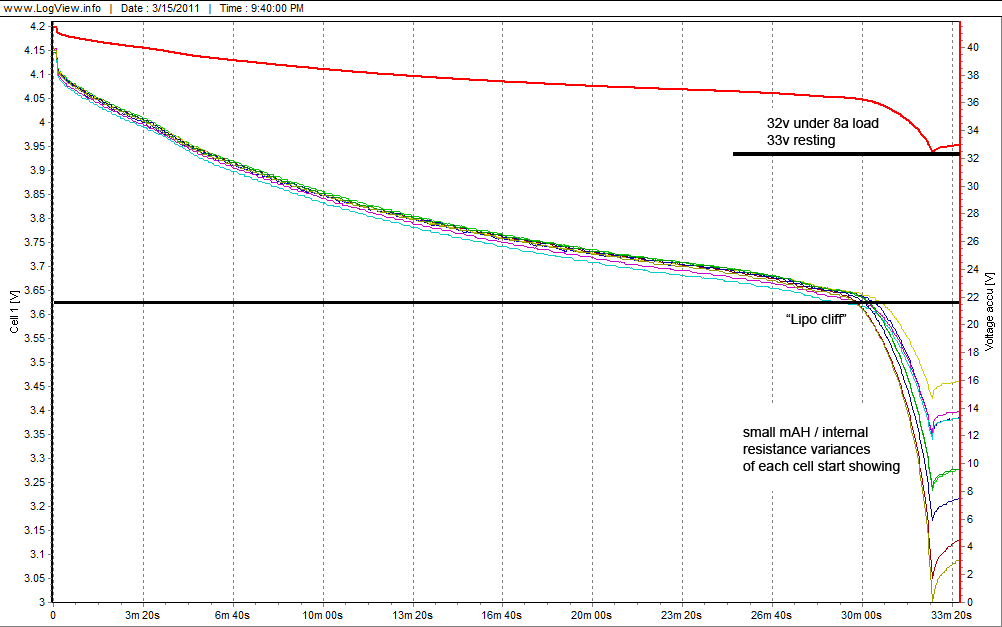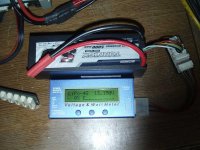10 kW
You need to look at this graph again:
http://neptronix.org/forumpics/lipotutorial/24_dischargingmechanics.gif
Lipo is different from other battery chemistries you might be familiar with. The discharge curve has a VERY pronounced drop off at a relatively high value. Only around the middle of the discharge curve is it even close to linear. You can't calculate your range with a "volts/mile" conversion with any accuracy at all except around the middle of the discharge curve. Even then, it is a strong function of the discharge rate and would only be any use at all for the same discharge rate. It is certainly no good after about 3.7 v/cell or so. After that, your battery capacity is nearly all done. If you keep draining it, it will go over the cliff in the graph. If you want to know how much capacity you have used, you need to monitor the watt-hours of use since charging. Even then, it is only an approximation and will depend on the discharge rate. The low voltage cut-off is to protect your battery, not to predict range.
Damage to RC Lipo is not reversible. Once the electrodes are damaged, they are damaged for good. You will only exacerbate the damage by continued use. Just because it will charge, it does not mean it is rescued. Check the capacity. If it is significantly reduced, get rid of it. I have a pile of burned metal that used to be a $200 controller and some scorched vinyl siding to testify to this conclusion.
I've pretty much just re-iterated the previous postings, but there you are.
Edit: See the following for examples of different battery chemistries:
http://homepages.which.net/~paul.hills/Batteries/discharge.gif
This are idealized curves and Lipo is not on there, but you get the idea.
http://neptronix.org/forumpics/lipotutorial/24_dischargingmechanics.gif
Lipo is different from other battery chemistries you might be familiar with. The discharge curve has a VERY pronounced drop off at a relatively high value. Only around the middle of the discharge curve is it even close to linear. You can't calculate your range with a "volts/mile" conversion with any accuracy at all except around the middle of the discharge curve. Even then, it is a strong function of the discharge rate and would only be any use at all for the same discharge rate. It is certainly no good after about 3.7 v/cell or so. After that, your battery capacity is nearly all done. If you keep draining it, it will go over the cliff in the graph. If you want to know how much capacity you have used, you need to monitor the watt-hours of use since charging. Even then, it is only an approximation and will depend on the discharge rate. The low voltage cut-off is to protect your battery, not to predict range.
Damage to RC Lipo is not reversible. Once the electrodes are damaged, they are damaged for good. You will only exacerbate the damage by continued use. Just because it will charge, it does not mean it is rescued. Check the capacity. If it is significantly reduced, get rid of it. I have a pile of burned metal that used to be a $200 controller and some scorched vinyl siding to testify to this conclusion.
I've pretty much just re-iterated the previous postings, but there you are.
Edit: See the following for examples of different battery chemistries:
http://homepages.which.net/~paul.hills/Batteries/discharge.gif
This are idealized curves and Lipo is not on there, but you get the idea.





